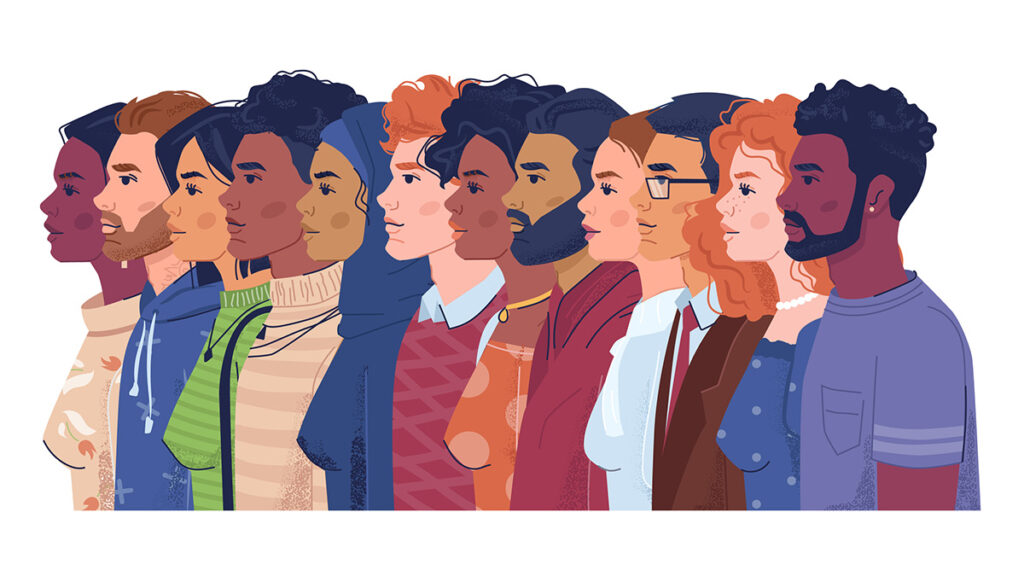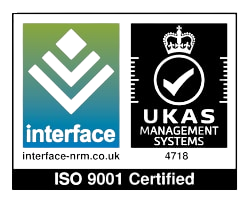The Importance of Diversity and Inclusion when hiring candidates
In the ever-evolving landscape of modern employment, embracing diversity and inclusion isn’t just a trend; it’s a strategic imperative. This comprehensive guide explores every facet of diversity and inclusion in hiring, answering crucial questions you as a recruiter might have.
We begin by dissecting the compelling business case for implementing equal opportunity hiring strategies. Discover the most effective methods for cultivating a diverse talent pool and find inspiration in real-world examples of companies leading the way in inclusive hiring practices. While prioritizing diversity and inclusiveness is paramount, we also address potential risks and costs of these strategies.
Lastly, explore how Assess Candidates can be your ally in advancing equal employment opportunities at your company. Our FAQs and Glossary provide added clarity to empower your journey toward a more inclusive workforce.
Contents:
- What is a business case for implementing strategies for equal opportunity hiring?
- What are the most effective methods to recruit a diverse talent pool?
- What are examples of companies introducing inclusive hiring practices into their recruitment processes?
- Are there any risks or extra costs to prioritizing diversity and inclusiveness in recruitment?
- How can Assess Candidates help you achieve your goal of advancing equal employment opportunities?
- FAQs and Glossary of Terms
Make your recruitment campaigns more inclusive today. Hire For Free
1. What is a business case for implementing strategies for equal opportunity hiring?
The business case for implementing strategies for equal opportunity hiring is both compelling and multifaceted for recruiters like yourself. It goes beyond mere compliance with legal and ethical standards.
What are the 6 benefits of diversity in a workplace?
- Enhanced Innovation and Creativity: A diverse workforce brings together individuals with varied backgrounds, experiences, and perspectives. This diversity fuels innovation, fosters creativity, and enables the development of unique solutions to complex problems.
- Broader Talent Pool: By embracing inclusive practices, organizations tap into a larger and more diverse talent pool. This widens the scope of potential candidates and increases the likelihood of finding the best fit for each role.
78% of HR professionals say that diversity in the workplace is impacting how they hire.
- Improved Reputation and Brand: Companies committed to equal opportunity hiring are viewed as socially responsible and inclusive. This can enhance their reputation, making them more attractive to customers, clients, and investors.
Did you know that businesses with reputable brands receive 50% more qualified applicants?
Finances Online
- Enhanced Employee Engagement: Inclusive workplaces where employees feel valued and respected tend to have higher levels of engagement and job satisfaction, leading to improved retention rates.
39% of respondents reported that they would leave their current company for a more inclusive one.
- Legal Compliance and Risk Mitigation: Implementing equal opportunity hiring strategies helps organizations stay in compliance with anti-discrimination laws and reduces the risk of costly legal disputes.
- Market Reach and Customer Base: Diverse teams can better understand and cater to a broader customer base, leading to increased market reach and revenue opportunities.

2. What are the most effective methods to recruit a diverse talent pool?
We have seen the benefits of ensuring diversity in your recruitment campaigns, but how can your organization practically implement processes to achieve this goal?
“Statistics show that approximately one-third of hiring decisions are regretted. Alarmingly, these hiring mistakes can cost a company up to three times that employee’s annual salary.”
Journal: Keeping Good Companies
Recruiting a diverse talent pool demands effective strategies from your hiring team that go beyond traditional approaches. Take a look at these few examples.

What are the most effective inclusive hiring strategies?
- Standardized assessments: Assessments such as cognitive ability tests, Game-based Assessments, video interviews are valuable tools that ensure a non-biased method to evaluate a candidate’s skills.
- Diverse Sourcing Channels: Broaden your recruitment efforts by using diverse sourcing channels such as partnerships with diversity-focused organizations, attending job fairs targeting underrepresented groups, and utilizing online platforms like LinkedIn for diverse candidate searches.
- Diversity Training: Train recruiters and hiring managers in recognizing and mitigating unconscious biases. This ensures a fair evaluation of candidates from various backgrounds.
- Inclusive Job Postings: Craft job descriptions that use inclusive language and emphasize your commitment to diversity and equal opportunity. This encourages candidates from diverse backgrounds to apply.
- Employee Referral Programs: Encourage employees to refer candidates from different backgrounds, as they often have diverse networks and can help expand your talent pool.
A referral makes a candidate 18 times more likely to be hired.
CareerPlug
- Internship and Mentorship Programs: Establish programs aimed at underrepresented groups to provide career development opportunities and foster a pipeline of diverse talent.
These methods, when used together, create a holistic approach to recruiting a diverse talent pool, promoting inclusivity, and ensuring equal access to opportunities for all candidates in your hiring campaigns.
Improve the likelihood of employing the right candidates. Hire For Free
3. What are examples of companies introducing inclusive hiring practices into their recruitment processes?
These examples sound good in theory, but let us have a look at real business cases. Many forward-thinking companies are leading the way in embracing inclusive hiring practices. If you wish to implement any changes to your hiring campaigns, take a look at these examples.
Which companies are leading examples in inclusive hiring?
- IBM: IBM launched the “P-TECH” program, providing underprivileged high school students with a clear path to technology careers through mentorship, workplace experiences, and tuition-free college education.
- Salesforce: Salesforce has set the standard for pay equity by conducting regular salary audits to ensure equal pay for equal work, regardless of gender or race.
- Unilever: Unilever utilizes blind recruitment practices, removing personal information like names and addresses from job applications to prevent unconscious biases during the initial screening process.
- Microsoft: Microsoft’s “Disability Answer Desk” initiative provides specialized customer support for customers with disabilities, while also hiring individuals with disabilities for these roles.
- Google: Google has focused on diversity by implementing unconscious bias training for employees and investing in programs to attract underrepresented talent in the tech industry.
“more than 75% of Fortune 500 companies use psychometric testing in recruitment”.
Open.edu
These companies showcase a commitment to diversity and inclusion, setting examples for others in the industry to follow. Their inclusive hiring practices not only promote diversity but also foster innovation and create more equitable workplaces.
4. Are there any risks or extra costs to prioritizing diversity and inclusiveness in recruitment?
Prioritizing diversity and inclusiveness in recruitment is a commendable goal, but it’s not the only objective. What else should you pay attention to as a recruiter?
Well, it is just as essential to recognize that there can be challenges and considerations to inclusive hiring.

6 potential risks and costs of inclusive hiring.
- Risk of Bias in Metrics: In an attempt to achieve diversity goals, organizations may inadvertently implement metrics or quotas that could lead to reverse discrimination. It’s crucial to strike a balance between diversity goals and merit-based hiring.
- Training and Education Costs: Providing diversity and inclusion training for employees, recruiters, and managers may require an initial investment in resources and time.
- Legal Compliance: Ensuring compliance with anti-discrimination laws and regulations demands vigilance, and non-compliance can result in costly legal disputes.
- Resource Allocation: Diverse hiring initiatives may require additional resources for sourcing, outreach, and accommodation for candidates with disabilities.
- Resistance to Change: Employees or stakeholders resistant to change might create internal challenges.
- Measuring Impact: Assessing the impact of diversity initiatives can be complex and may require additional data collection and analysis.
Despite these considerations, the long-term benefits of prioritizing diversity and inclusiveness in your recruitment campaign far outweigh the potential costs and risks – if implemented correctly.
Leave your concerns to experts in inclusive hiring. View Plans
5. How can Assess Candidates help you achieve your goal of advancing equal employment opportunities?
Choose Assess Candidates for your recruitment needs and take a giant leap toward advancing equal employment opportunities.
3 Ways Assess Candidates enables Diversity and Inclusion:
- Cutting-edge solutions designed to identify talent based on merit, not demographics.
- Fair, bias-free assessments, and standardized processes, ensuring that every candidate has an equal shot at success.
- Customisable cut-offs allowing you to adjust pass marks based on how different populations perform.
Join the ranks of companies championing equal opportunity hiring with Assess Candidates as your trusted partner.
Practical example of Assess Candidates helping your company achieve your goal of advancing equal employment opportunities.
Problem:
Your hiring managers believe that job vacancies do not attract candidates from diverse backgrounds, which translates into lower inclusion rates of newly recruited employees.
Assess Candidates Solution:
With our team of experienced HR professionals, we will work on your company’s case on an individual basis. We will evaluate your recruitment process from the way your company advertises the roles, all the way through the initial screening process and assessment stages of the hiring process. We will ensure your company does not miss any top talent from diverse backgrounds, working with you to create an engaging assessment process that is fair for all.
6. FAQs and Glossary of Terms
Frequently Asked Questions
- Why is diverse and inclusive recruitment important?
- Diverse teams bring a broader range of perspectives, creativity, and problem-solving skills, enhancing innovation and competitiveness.
- Inclusive recruitment fosters a positive workplace culture, leading to improved employee engagement, retention, and overall business success.
- How can organizations promote diversity in hiring?
- Implementing bias-free recruitment practices, such as blind resume reviews and diverse interview panels.
- Actively sourcing candidates from diverse talent pools and fostering inclusive job postings.
- Are there legal considerations for inclusive hiring?
- Yes, equal employment opportunity (EEO) laws require fair treatment and non-discrimination in recruitment, emphasizing the importance of inclusive practices.
- What are the benefits of a diverse and inclusive workforce for an organization?
- A diverse and inclusive workforce offers several benefits, including increased innovation, improved problem-solving, better adaptability to changing markets, enhanced employee satisfaction, and improved company reputation. It can also lead to better customer relations and access to a broader talent pool. Ultimately, organizations that prioritize diversity and inclusion are more likely to achieve long-term success and sustainability in today’s globalized and diverse business landscape.
- How can organizations measure the effectiveness of their diversity and inclusion initiatives in the hiring process?
- Measuring the effectiveness of diversity and inclusion initiatives involves tracking metrics such as demographic representation, employee satisfaction surveys, turnover rates, and promotion rates. Organizations can also assess the success of their initiatives by examining the diversity of candidate pools, interview panels, and the impact of diversity training programs.
- What are some common challenges organizations face when trying to implement diversity and inclusion in hiring?
- Common challenges include unconscious bias among hiring teams, resistance to change, limited access to diverse candidate pools, and the difficulty of creating an inclusive workplace culture. Additionally, organizations may encounter challenges in retaining diverse talent and ensuring equitable career advancement opportunities.
Glossary of Terms Used:
- Diversity: Diversity refers to the presence of a wide range of differences among individuals in a group or organization, including but not limited to factors such as race, ethnicity, gender, age, religion, and more.
- Inclusion: Inclusion involves creating an environment where all individuals, regardless of their background or differences, feel valued, respected, and empowered to contribute their unique perspectives and abilities.
- Bias-Free Recruitment: Bias-free recruitment is the process of conducting hiring practices in a manner that is free from prejudice or discrimination, ensuring that candidates are evaluated solely based on their qualifications and suitability for a role, rather than their personal characteristics.
